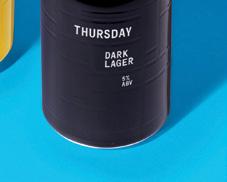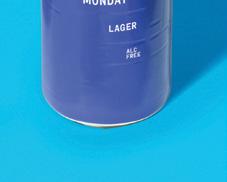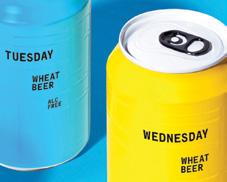
28 minute read
INJASUTI MUTI
BETWEEN THUNDERSTORMS MATT GORLEI AND SHAUN DICKSON TOOK THEIR CHANCE IN THE DRAKENSBERG MOUNTAINS TO TARGET THE WILY RAINBOWS OF THE INJASUTI.
Photos and story Matt Gorlei
Forty millimetres of rain had fallen over the Injasuti Valley a few hours before we arrived. Water poured down cracks in the hills, the potholes were like glassy little frog ponds and the low water bridges gave Shaun’s low-clearance load-lugger a bit of a wet tickle. We suspected that there had also been rain the day before and debated whether we would be wasting our time up there or not. We even tried to call the reserve office and eventually managed to speak to someone who explained, “River is down.” When we asked if it was crossable, he said “little drizzles” had just started.
That was enough for us to make up our minds to do an overnight trek up the Injasuti. Last minute packing commenced and we were set for an early start. As on most fishing missions, there was an early 3.30am wake up, a mandatory pie stop at The Windmills (the best pies on the N3) and fishy chats about how our conditions were looking. We checked the weather every 20 minutes as we got closer to our destination. It was looking pretty good with partly cloudy skies and no rains predicted. Injasuti, also spelled: Injesuthi, Injisuthi, Njesuthi, Nyesuthi or eNjesuthi is one of the tallest peaks in Southern Africa’s Drakensberg Mountain range. It means place of the “well fed dog”, apparently because it was so rich in game at the time it was discovered by the amaHlubi people who hunted with packs of dogs. I read about this place years ago in Peter Briggs’s book, Call Of The Stream. Both Shaun and I had fished the lower reaches of the Injasuti Valley and we had chatted about doing a trek higher up to explore some water we knew would have only been fished by very few really dedicated fly fishers. You arrive at this reserve, like many others, by just driving to the end of a pretty bad road. We checked in with the Ezemvelo KwaZulu-Natal Wildlife guys, signed the mountain rescue register book and were pretty much set to start our trek. But first, we both had our Windmills Pepper Steak pies to deal with. Luckily Shaun knew the guys who worked there as they had worked with his folks in the old KwaZulu-Natal Parks Board when he was kid. We managed to get some keys, from a guy who called him, “Little Dickson”, to one of the cabins at the Ezemvelo Camp and both released some respectable brown trout…
Feeling well prepared and a bit lighter we started the trek up the valley. We passed some hikers on their way back from a night up the valley who warned us to make the crossing soon because the river was rising and was only just crossable. Great, a blown-out river on the rise.
The Injasuti River is relatively small. As a fly fisherman, you would consider it a small stream but, due to the valley’s gradient and the amount of water sluicing off the hill sides, for us it was nothing short of a torrent. We were not prepared for fishing these conditions, as we had an Xplorer Guide II 1-weight set-up with a decent selection of dry flies and maybe five heavy nymphs that were pinned last minute into the foam of Shaun’s chest pack.
You recognise this moment, the one where you second guess your decisions and start to think that what you are attempting may be a bad idea one. It’s the deep, experience-based algorithms of your brain running the numbers and telling you it’s better to turn back now. The way it looked, there was no way we could fish this river with a dry fly, let alone try and film it. After all, that was the idea. I was there with my camera to film something a little different up a river that has had little exposure.
Luckily, Shaun and I are both optimists, or idiots, so we thought that if we hiked high enough upstream there would be fewer tributaries and less water joining the system off the hillsides. We also knew that high up these valleys the river levels can rise and fall really quickly. The state of the river was due to the recent downpour, so there was a good chance it could drop enough by the next day to give our dry flies a chance.
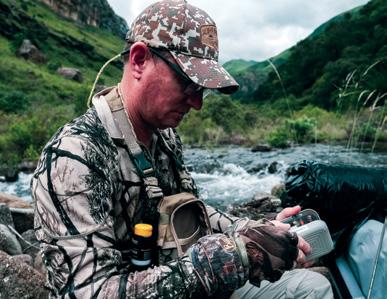
That first day was hard work. We trekked and covered a lot of water; we fished the best looking lies and made really good ground getting as far upstream as we could. While a few fish fell for our nymphs in the fast water, it kind of clicked for me why these rainbows thrived up there. The river was turbulent; the gradient meant there was water rolling down steps in the river; it meant each fish-holding pocket or lie had really well-oxygenated water entering it, all stuff rainbow trout love as opposed to their lazy pool dweller cousin, the brown trout.
There are not many “pools” up there, not in the summer time flows that we experienced, just cascading series of pocket water for kilometres. The fish don’t get big at all up the Injasuti, up to about 20cm. We questioned this and thought it must be due to the low flows in winter. We had seen a picture of a young fly fisher friend up there this last winter and you wouldn’t recognise the river at all. The flow simmers down to a trickle, it is crystal clear and the pocket water becomes small holding pools which would be the only place for a trout to live during those cold and dry winter months. So, as a means of survival, staying small would make sense as these fish would be almost invisible with their unique par markings on the gravelly, free-stone and granite bottom that this river offers them.
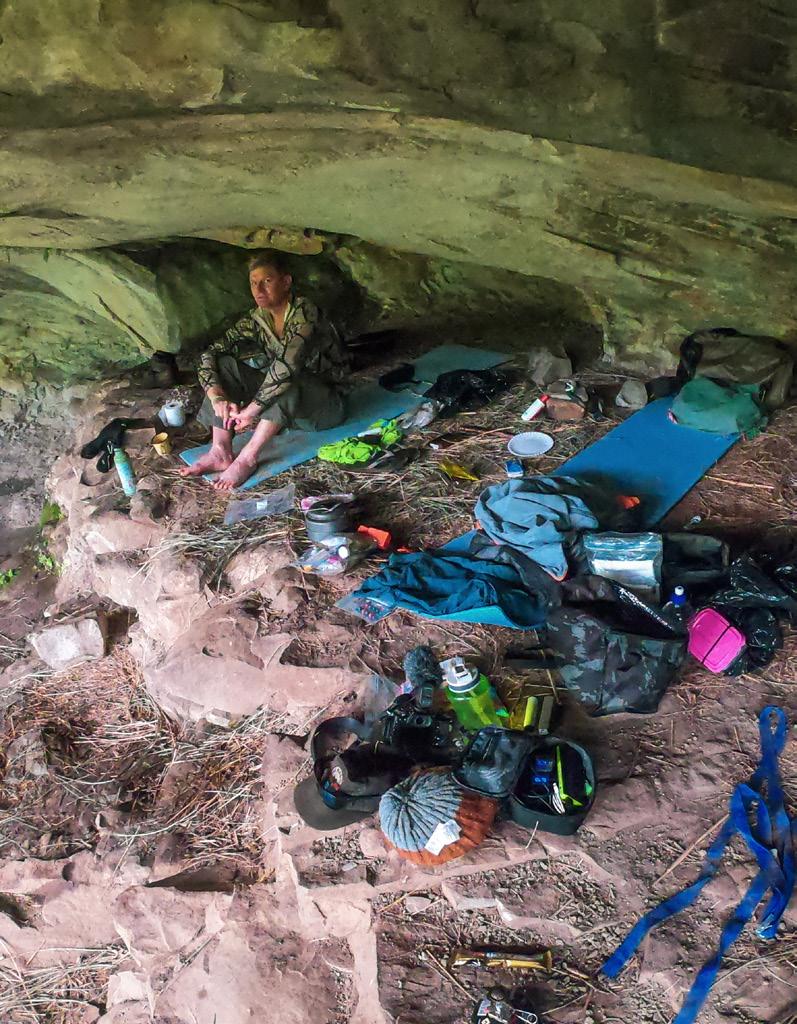
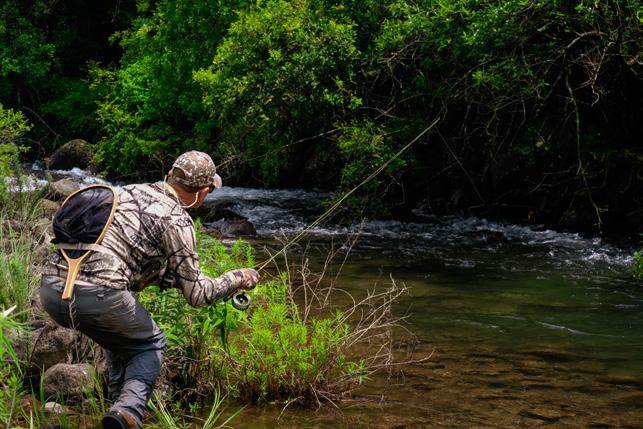
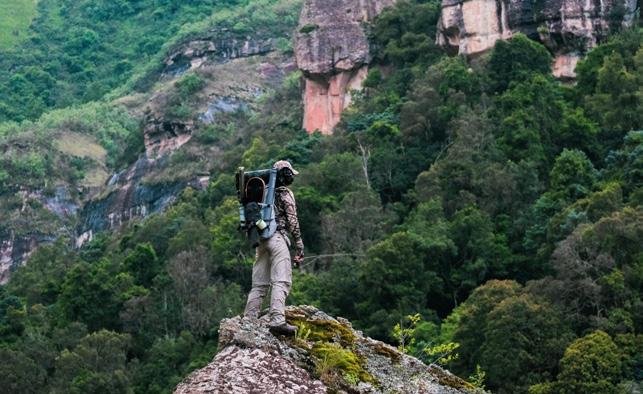
Nils Gabsda, Stephan Dombaj and Marten Laciny with a barbel bounty.
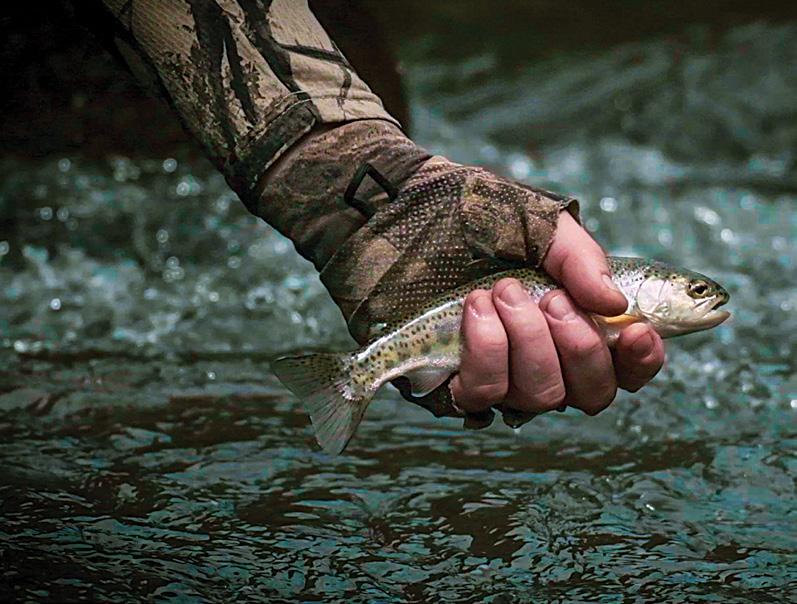
“The fish don’t get big at Injasuti, up to about 20cm. As a means of survival, staying small makes sense.”
The flows started to drop from about midday and our spirits picked up even though we hadn’t had the dry fly morning we had hoped for. We made it about 10km up the valley with a few fish in the net. We spent that night in a cave, thinking about how hundreds of years ago the San people would have sat there just like us, listening to the water dripping off the cave roof and the distant hum of the river cascading down the valley. We had certain luxuries however: a steamy Durban bean curry with rotis and a flask of Old Brown Sherry enjoyed while the sky turned orange and then pink and then orange again before fading into a peaceful darkness of Covid free air; it was so good, a moment we never wanted to end.
The next day, the river had done exactly what we had hoped and had dropped over a foot. The sun was out, the birds were singing and we had a spring in our steps as we said to each other over and over again that, “today is a dry fly day”. The idea was to go a good way back downstream before fishing each likely looking dry fly lie on our way out. We trekked about an hour along the hikers’ path, high up on a contour with the river winding down alongside us. The steep banks of the valley make it tricky to get down to the river in many places.
We saw a section of river with a bend and about five or six pockets with lovely tail outs. This was where we would start. We bee-lined straight off the path, boots sliding on the damp grass as we zig-zagged down. Excited, Shaun rigged up his dry fly and imagined that this first pocket was about to see a deer-hair caddis drift through it for the first time. At the second drift the first spotty mountain stream rainbow rose and took the fly off the surface. They don’t fight hard but they are hard to keep on the hook. Briggs described them as “river wise street fighters” and that’s what they are as they use the river’s turbulence and currents, jumping and wriggling to try and throw the hook. You can expect to lose fish.
INJASUTI SHOP THE MISSION
Rod: Xplorer Guide II 794-1wt, xplorerflyfishing.co.za

Reel: Xplorer EVO C001,
xplorerflyfishing.co.za
Tippet: Rio Fluoroflex Plus+ - 7x, rioproducts.com,
xplorerflyfishing.co.za
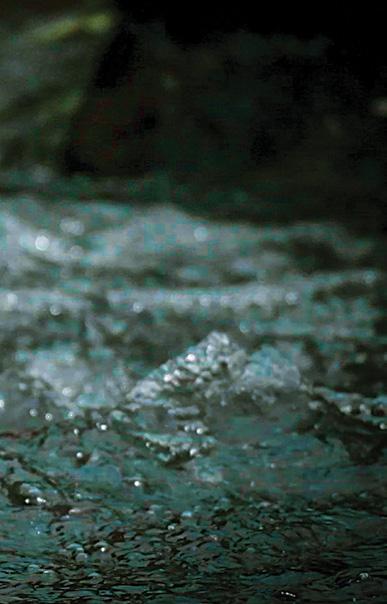
Line: Rio Creek WF2F, rioproducts.com,
xplorerflyfishing.co.za
Pack: Patagonia Stormfront Roll Top, patagonia.com,
xplorerflyfishing.co.za
Close up, the fish are beautiful, each uniquely marked. If you take the time and look closely at the details on these fish you will see that they have a certain unique beauty. From the purple and pink sheen of the cheeks to the yellow-green scales along the top-side of the torpedoshaped bodies and the silvery shine of the belly, Injasuti rainbows really are beautiful. We had a great day, feeling the energy of the stream as it wound through this untouched landscape. The flow was just about perfect and the fish were coming up for dries. The fishing was not easy up there. If a fish refused the fly it would seldom come back for a second look. Accuracy was important when targeting a rising fish, as it wouldn’t move too far to the left or the right for a dry fly.
Since this Drakensberg river was stocked way back when, these rainbow trout have endured many droughts and floods and seen all sorts of dangers and predators, so there are no easy pickings for a fly fisher. The hard work of getting to them and the challenging behaviour of these fish make catching them so much more satisfying. Size is not important. By lunchtime that day we had to get out of that valley fast as we saw an aggressive buildup of clouds towering over us. We made it out just in time, getting back to the base camp as the rains began and the thunder and flashes of lighting got closer and closer. As quickly as things had improved for us, it was all over. The river started to rise rapidly and a massive electrical storm chased us out of the valley. We felt as if we had accomplished something. Following our gut-feelings and keeping optimistic provided us with that window of opportunity to throw a fly in a place where few others have been. The window closed and it was all over. Time to head home.
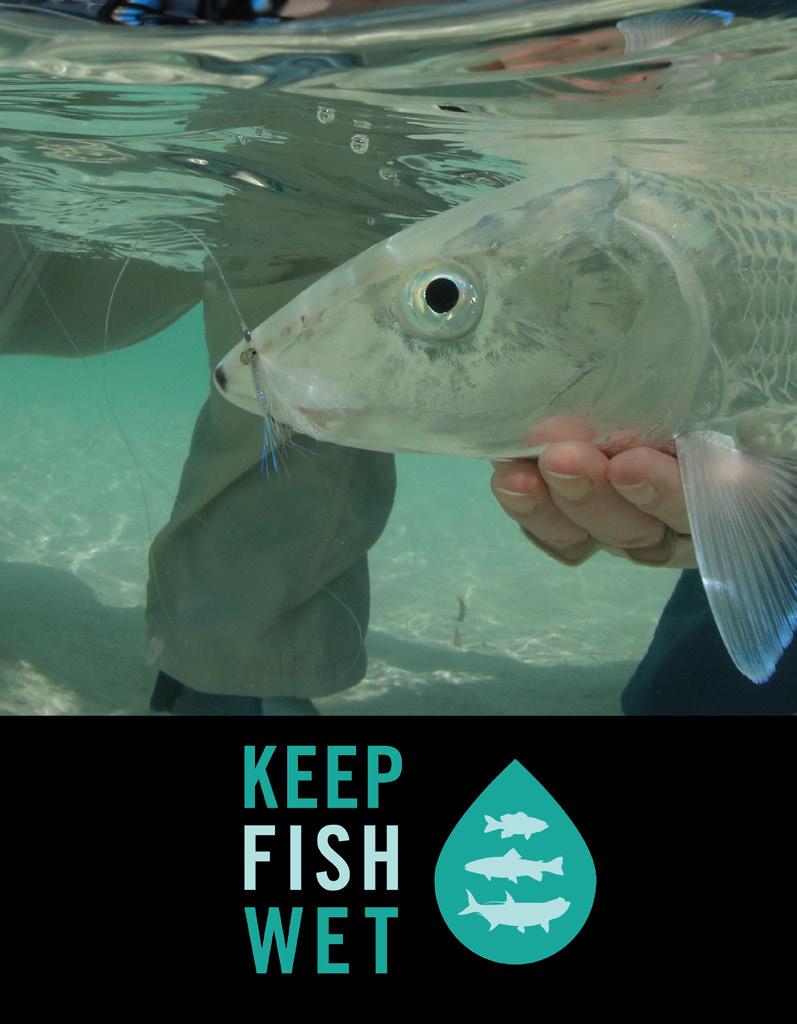
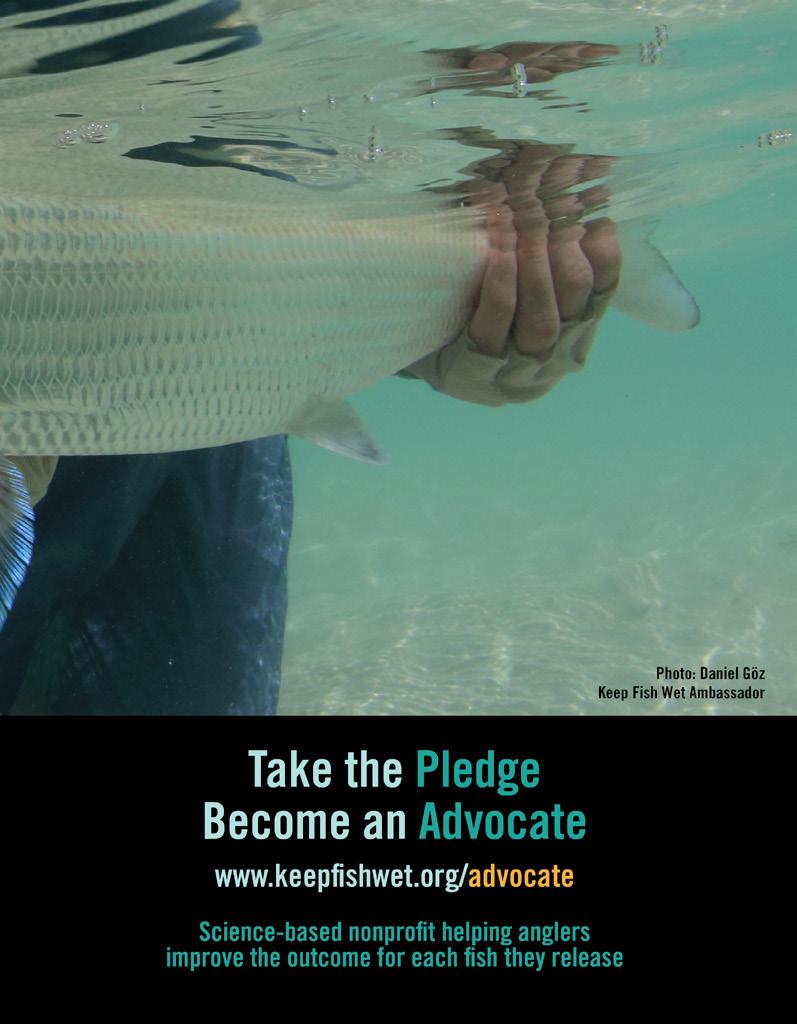
LATEST RELEASES SALAD BAR
SCOTT - CENTRIC ROD
First Scott head honcho Jim Bartschi replaced the Meridian with its saltwater successor the Sector and now he’s gone and replaced the legendary Radian with the Centric series of rods. ‘Big whoop,’ you say, ‘rods get replaced all the time’. This is true and the Radian had a good 8-year run, but with a series as lauded as the Radian (or the Meridian) Bartschi would be forgiven for flogging that name and extending its reach till Valhalla calls. But where’s the fun in that? From what we have heard, the USA-made Centric is astonishingly good. Laden with fresh tech, it sports new tapers featuring multi-modulus lay ups and a new resin system to increase fibre density and reduce weight. It also features Scott’s new generation ARC reinforcement for greater stability along multiple axes. Fitted with Flor grade cork, new titanium stripping guides with super slick zirconia inserts, new low glare Snakebrand Universal snake guides, and a new fully milled reel seat featuring speed threads, easy grip knurling, self-indexing hoods, micarta inserts, a special Delrin lock washer, and type 3 flat black hard coat. Distance, accuracy, recovery, balance and speed - the Centric can do it all with ease. If you like fast action rods, coursing with feel, this might be your new best friend. scottflyrod.com, flyfishing.co.za


PATAGONIA - BLACK HOLE® CUBE
Whether you use it as a Dopp Kit (aka toiletry bag, not a dop kit, which in South Africa equals pineapple, yeast and some sugar), a bag to stash your reels, tippet or your electronics, the bombproof Black Hole Cubes from Patagonia are brilliant multi-use sacks. Made of extremely durable, weather-resistant, 100% recycled polyester ripstop with a highly weather-resistant TPUfilm laminate and a DWR (durable water repellent) finish, they have a clever exterior daisy chain for lashing onto packs or clipping into duffel bags, corrosion resistant sliders for saltwater applications and a large grab handle. patagonia.com, xplorerflyfishing.co.za
SCI ANGLERS – SWITCH TIPPET HOLDER
There are few things worse on the water than when you are trying to change your leader and you cannot find/hang on to/ tie on your tippet material as you flip between vest pockets, the recesses of your pack and numerous floating tag ends. Scientific Angler’s powder-coated aluminium Switch tippet holder fixes that by keeping your tippet spools (up to 8 of them) organized and ready to go at a moment’s notice. Fix it to yourself in either a horizontal or vertical orientation on your sling pack, vest or boat bag for easy and quick re-rigging. Available in red, black, blue or chartreuse. scientificanglers.com, frontierflyfishing.co.za


DUKE CANNON – BLOODY KNUCKLES
“Nu-uh poephol, I don’t need no blerrie moisturizer!” In the PRO Trout Textured Fly Line, Orvis appear to have found the Goldilocks zone of versatility. Designed with advanced compound tapers, its increased surface area allows the line to sit higher in the water, offering less drag (thanks to the AST Plus treatment), easier mending, less water spray and easier pick-ups. The micro-textured surface traps air to provide increases in both shootability and floatation while decreasing friction. The 50’ head has a gentle front taper followed by a powerful belly for easy casting and delicate presentation, while the longer rear taper is designed for better line control, casting, and onwater mending. Orvis Line ID makes it easier to identify the line’s weight, taper and functionality when reaching for your
Easy on there our Cro-Magnon friends, there’s a valid reason your dry, cracked hands need some attention. If you have ever gone from the rough stuff (lugging pig iron around the gym, working on your car, chopping wood etc etc) to the fine detail stuff of fly tying (e.g. creating a split thread for a CDC dry), having horny hands does not help. In fact, it hinders things. Made with lanolin, Duke Cannon’s Bloody Knuckles Hand Repair Balm provides much-needed moisture without leaving the hands feeling sticky or greasy. Plus it is odourless so you won’t smell like like flowers. You’ll still have your signature musk of massaged truffle-nuts, fish slime and diesel, but now your hands will be able to do everything.

ORVIS - PRO TROUT
Think of it as Q20 for humans. justlikepapa.com gear. Available in 3-6-weight. orvis.com, flyfishing.co.za
SCIENTIFIC ANGLERS – AMPLITUDE SMOOTH INFINITY SALT
As if a sexy android was trying to ply you with tequila in a bar, there’s something weirdly erotic about the name of this, Scientific Angler’s incredible saltwater line. Talking of advanced tech, this line features Sci Angler’s revolutionary AST Plus slickness additive, so it boasts up to five times less drag and eight times the durability of traditional lines, it’s versatile and accurate and will both out-shoot and outlast pretenders to the throne. It’s made half a line weight heavier for turning over even the biggest flies on gale force days, but the extended head length gives you accuracy and presentation no matter how many beers you had at lunch. A high contrast sighter warns you when that Geet is running too far towards a reef, while Tropi_Care tech keeps the line stiff and slick in the tropics. scientificanglers.com,
frontierflyfishing.co.za

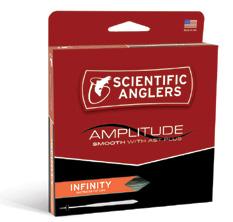
LATEST RELEASES SALAD BAR
PATAGONIA - PLANING ROLL TOP PACK 35L
Just as most 4x4 capable cars are never truly put to the test by their owners, a lot of hardcore packs never go for a swim. Our point? Not everything needs to be hardcore amphibious like Patagonia’s renowned Stormfront range of packs. Take Patagonia’s 35L Planing Roll Top Pack. It easily hauls soaked gear in the exterior mesh pocket, while keeping clothes, fly boxes and your lunch dry and organized on the interior. Made from tough recycled polyester with a TPU-film laminate for wet-gear organization, it also features a padded back panel, an adjustable sternum strap, waistbelt and a breathable, hydrophobic shoulder harness for all-day carrying comfort. Available from Xplorer Fly Fishing in Tiger Tracks Camo: Ink Black and Kansas Sky: Berlin Blue. patagonia.com, xplorerflyfishing.co.za
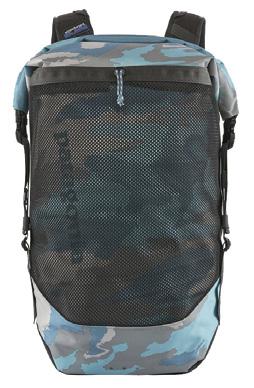
HPA - GRANDAIR SWS WATCH & KNIVES
Do you like salmon? Well perhaps you like them enough to want to buy a snazzy watch or knife, both made by HPA, where 10% of the proceeds go towards the North Atlantic Salmon Fund (northatlanticsalmonfund.org). The watch is a legit dive watch, with a salmon on the watch face, one on the back of the watch and another on the buckle. Waterproof to 300m (because you always dive that deep) it sports a 41mm sapphire glass, ceramic bezel and is powered by the ever-reliable Seiko NH35 mechanism. The knives, available in slate black (carbon), sage green (micarta) or blue (G10) are made from Japanese steel, measure 7,5 inches when open and have a lock-back for safety. Perfect for your EDC (Everyday Carry) needs.
hpa-shop.fr
PELAGIC GEAR - BOARDSHORT SHARKSKIN PRO
Now here’s a boardie/shortpant designed for fishing! Pelagic Gear’s Sharkskin Pro boardies are built with 4-way super-stretch, Sharkskin-dobby fabric with stain and hydro-repel technologies. They feature four all-purpose storage pockets and a Kevlar reinforced tool pocket, belt loops, adjustable side waist straps, and a traditional button zip fly. Perfect for that hangbal hero shot.
pelagicgear.com, safarioutdoor.co.za

LATEST RELEASES SALAD BAR
GUIDE CLASSIC WADER – STOCKINGFOOT
Fresh from Simms is the Guide Classic Stockingfoot waders, featuring the Montana-based company’s legendary GORE-TEX waterproof-breathable fabrics. With 3-layer GORE laminate upper + 3 layer with reinforced front leg GORE-TEX laminate lower, the Guide Classic uses the same fabric as the fabled G3 Guide Wader. The Classic also features a 38mm suspender with opposing Duraflex buckles for easy waist high conversion, a fleece lined reach through handwarmer pocket (so you can shake your own hand when you land a hog solo on a freezing Thrift session), a stretch woven front pocket with zipper stash option, and anatomically engineered left and right neoprene stockingfeet with built-in gravel guards. simmsfishing.com
SCI ANGLERS – ABSOLUTE TROUT
We’ve been using this stuff for the last year or so on trout, yellows, carp, sandfish and other species and we can confirm it is the berries (if the berries were as tough and thin as Spiderman’s webjizz). Made with proprietary copolymer blends that are designed to drastically reduce water absorption while maintaining an optimal suppleness for high knot strength, Sci Anglers boasts that Absolute nylon leaders and tippet have a 29% higher wet knot strength compared to their previous material and up to 40% higher wet knot strength when compared to their competitors. Available in 30m spools from 7x – 0x. scientificanglers. com, frontierflyfishing.co.za VAC RAC
GREYS - LUGGAGE BOAT BAG
For the most part we like to pack light, but we make an exception for stillwater fly fishing from a boat. That’s the one scenario where you do not want to leave any essential gear behind, because you may just need those 17 sink lines, that 15th box of boobies or that third six pack of beer. When it comes to their boat bag, Grey’s have gone all out. For starters, there’s a ridiculous amount of handy zipped pockets on the outside of the bag (many with convenient mesh pockets at the front to access all your essential bits of gear). Then there’s an adaptable reel/tackle station with padded Velcro dividers, a waterproof rain cover which can be stuffed into a side pocket and extremely durable rip-stop outer, a padded shoulder strap, a fly keeper and an EVA waterproof base. Kitchen sink not included. greysfishing.co.uk, safarioutdoor.co.za
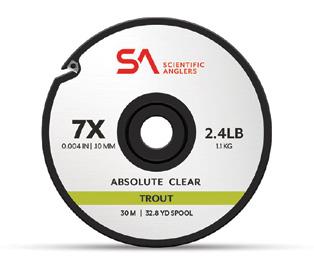
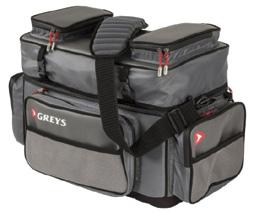
Stockists: Mavungana - JHB & Dullstroom, Fishing Pro Shop - PTA, Safari and Outdoor - PTA, Xplorer Fly shop - DBN, Kingfisher - PMB, Stream-X - Cape Town

MUST HAVES PAY DAY WE’RE ALL BROKE SO CLOSE YOUR KOEK AND READ A BOOK.
HUNTING TROUT – TOM SUTCLIFFE
Back by popular demand, if you do not yet have a copy of Hunting Trout – Angles and anecdotes on trout fishing, this - the third edition of Tom Sutcliffe’s classic, published by Burnett Media with forewords by Nick Lyons and Stephen Boshoff, new illustrations, a new cover shot by Gerhard Loubscher and a new preface from Tom - is one for the collection. Hunting Trout is informative, entertaining story-telling at its best and you will come away from this book wiser, better informed and motivated to make your own stories. There’s a reason Tom is compared to the great fly fishing writers and personalities of the UK, US and elsewhere, but we should hold him in higher regard because he is ours and the places he writes about are mostly our own too. Available directly from tomsutcliffe. co.za or from all good fly fishing stores nationwide.

FATHOMS – REBECCA GIGGS
Every now and then a truly remarkable author comes along who is able to change the way we not only look at a subject but, thanks to their contribution, also the way we look at a genre. Rebecca Giggs and Fathoms – The World in the Whale is one of those authors and one of those books. Starting with her own personal experience of a beached whale she encountered in Australia (dying slowly, crushed by its own weight and overheating in its blubber) Giggs takes us on a deep dive into the world of whales. From the history of whaling to cetacean taxidermy, whalesong, corsets, what happens when a whale dies out at sea (the actual term is a ‘whalefall’) to a whale found off Spain with an entire plastic greenhouse inside it and a Beluga that tried to speak English, Giggs somehow manages to evade the heavy academic bog and instead produces the most remarkable poetic nonfiction that is about so much more than whales. It’s also about us and our impact on the world. amazon.com
BITTERKOMIX 18 – CONRAD BOTES & ANTON KANNEMEYER
The Mission’s editor-at-large Conrad Botes and his long-time artistic wingman Anton Kannemeyer are back with the latest issue of Bitterkomix, a cult comic book series that has been going for almost 30 years now. At 120 pages, it’s their biggest volume yet and it’s jam-packed with satirical take-downs, thought-provoking strips and essays decrying the rise of censorship from both the conservative right, the ‘liberal’ left and even the homogeneity demanded of us by social media censor-bots. The cover packs a few warnings – “Bitterkomix: A Safe Space From Millenials. Trigger Warning, Freedom of Speech Inside. Wakkerder than Woke.’ Perhaps best of all, it’s pangolin friendly. soutiepress.com.
THE LIFER THE SILVER FOX
MAKING ASSUMPTIONS ABOUT WHAT THE FUTURE IS GOING TO BE LIKE – AKA SCENARIO PLANNING – IS, IN MANY WAYS, WHAT FLY FISHING IS, THE ABILITY TO PREDICT AND INDUCE OUTCOMES BASED ON YOUR READING OF WHAT YOU SEE. FACED WITH AN UNCERTAIN WORLD, RENOWNED FUTURIST AND SCENARIO PLANNER CLEM SUNTER SHARED WITH US SOME OF THE BEST ADVICE HE EVER GOT, WHICH APPLIES BOTH TO FLY FISHING AND LIFE IN GENERAL.
Photos. Clem Sunter the boom of the big bass drum as they marched up and
Iwas brought up as a child in Kensington in the middle of London. The time was the late 1940s and early 1950s just after the Second World War. It was not a posh suburb then and still had homes destroyed by bombs during the war. I remember ration books, the smog where you could not see the bus-stop you were standing at and British Restaurants where you had cottage pie. We never starved despite all the post-war shortages.
My first experience of fishing was walking from the flat where I lived In Sheffield Terrace, down Church Street and as the guide, we would find the loch.
into Kensington Gardens to the Round Pond. The latter is an ornamental lake, created in 1730 by George II, and covers about seven acres. The edge dipped into the water in a way that made it very easy for children to get wet without falling in completely. I would go net-fishing there for tadpoles, or ‘tiddlers’ as they were called, most of which I threw back.
Occasionally, I would take a jam jar, fill it with water and take a couple of fish home to show my parents. In those days, as a five to ten-year-old boy, you could walk around London alone with no thought of anyone harming you and with my parents quite happy to let me go out on my own. As I grew up, I was given a bike which made it easier to get to the pond. Then a model yacht arrived for Christmas so I divided the time between sailing the boat and fishing. All in all, it was a wonderful introduction to having a pleasant road in Queen’s Gate.
In my teenage years, my father started taking me and my mother to Scotland to fish. I was an only child so the three of us would pack a small amount of luggage and go away for a couple of weeks in summer. We would stow it in the boot of our old Riley motor car and drive to the mainline railway station in London. We would have our car loaded on the train to Perth in Scotland and take an overnight trip on the train. I always took the top bunk in the carriage with my parents below me. From Perth we would make our way north to Dornoch on the East Coast in Sutherland and stay at the Dornoch Hotel. Along with Gleneagles, it was considered a great place to stay; and it also had a golf course right opposite it. On weekends, in the late afternoon, the local pipe band used to play in the village square and, to this day, I can hum some of the famous Scottish tunes they played. It was not just the pipes; it was the rat-a-tat-tat of the drums and down the square that got to me. During the week, my father organised for the three of us to go fishing for the day. We would set out in MoJo, the nickname for the Riley because the number plate was MJO 345, and arrive in the vicinity of some obscure Scottish loch in the middle of nowhere. We would park the car by the road and set off on a healthily long walk with a picnic basket, rods and tackle in hand. Eventually, with my father
daily hobby when I was on holiday from the school up the Often, when we got there, we would be greeted by a Scottish ghillie who would help us prepare the rods and row us out to the centre of the loch in his boat. Thus, I learnt how to fly-fish in the truly classic environment of the northernmost part of Scotland. Ironically, my mother caught the biggest fish ever in the family by dapping with a fly bobbing up and down on the water rather than by using the traditional cast-and-drift method.
The best piece of advice I ever got was from a ghillie – and I can see his scraggly beard to this day moving up and down as he said: ‘Life is like fishing. You never know when the fish is going to bite but, when it does, be sure to take advantage of it.’ I never caught any really big trout in all the years I fished in Scotland, but the advice came in very handy at those moments in my life when an opportunity arose and his words flashed by in my mind. My immediate reaction was: let’s see what is on the other end of the line. And whatever it is, be sure to use the right tactics to haul it in - however long it takes you to do so.


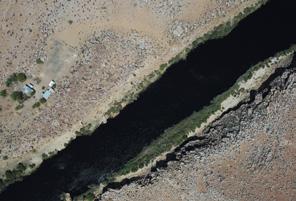
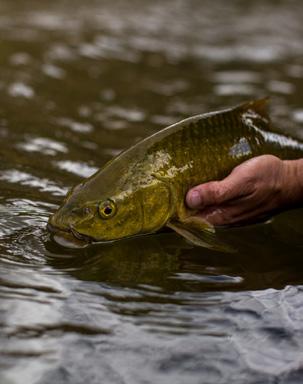
PROTECTING YOUR FLY FISHING FOR THE FUTURE

POP QUIZ
NEW YEAR NEW YOU? OR SAME OLD DUMMY YOU WERE IN 2020? TAKE OUR QUIZ TO SEE IF YOU PICKED ANYTHING UP IN THIS ISSUE.

1. What did Jimmy Eagleton do to catch his jutjaw on fly (page 30)?
A. Get a pink slip from his missus. B. Fill in the requisite leave forms from his boss. C. Stand in line at the Post Office for a fishing license D. Scale a cliff at Cape Point.
2. Brendan Becker’s grandfather was a traveling comedian famous for… (page 20)?
A. Kicking Frank Sinatra in the nuts. B. Setting himself on fire. C. Acting like a stinky hobo who likes to sing. D. Dancing like no one is watching.
3. One of the fish Platon Trakoshis wants to catch is Morone saxatilis, commonly known as… (page 22)?
A. The Kenny G of Fish. B. The Warren G of Fish. C. Lunkers. D. Stripers. E. Windscreen wipers.
4. According to Bob Skinstad, the soundtrack for their Tour de Cosmo featured (page 38)?
A. Lockdown - Anderson .Paak. B. Jerusalema - Master KG. C. Big Girl (You Are Beautiful) - Mika D. Black Mamba Boy - Black Mamba Boy E. Don’t Let The Old Man In - Toby Keith/Clint Eastwood
5. What do the RUFFC (Rhodes University Fly Fishing Club) want installed at Thrift (page 54)?
A. A flybrary. B. A brewery. C. A shrubbery. D. A warm shower E. A roof.
6. According to Matt Gorlei, ‘Injasuthi’ means… (page 82)?
A. Place of the well fed dog. B. Place of the cave-dwellers. C. Place of the fermented pineapple. D. Place of the small fish.
Answers: 1. D, 2. C, 3. D, 4. D&E, 5. D, 6. A
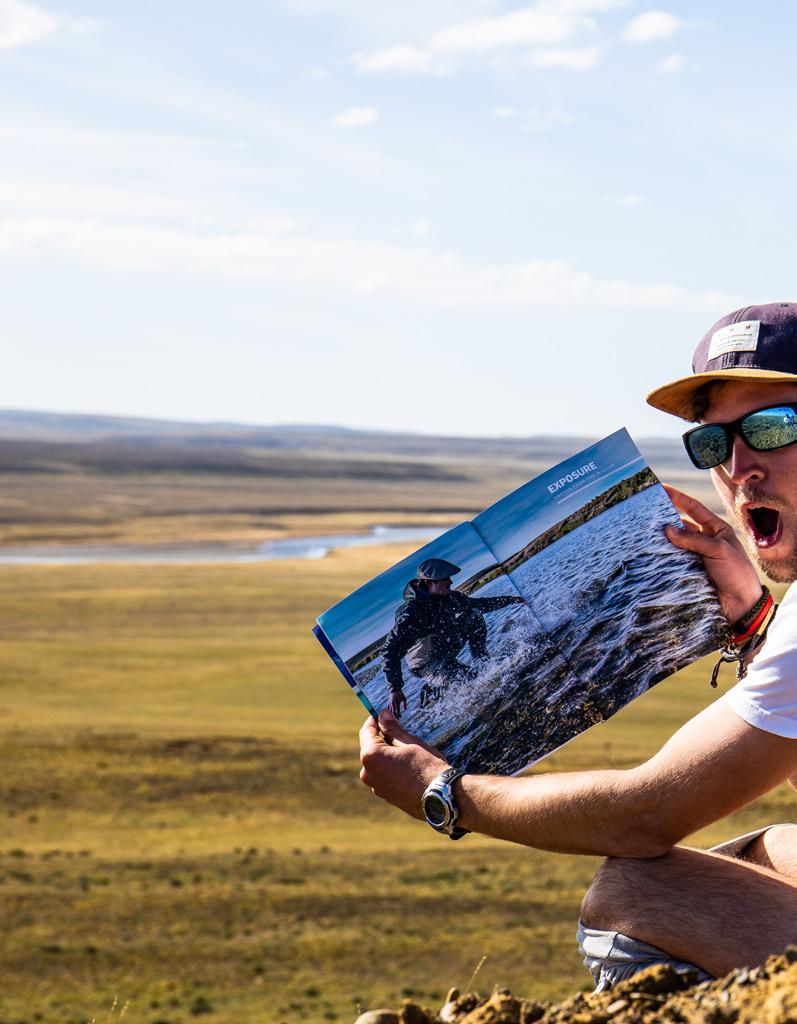
WANT MORE ABSORBENT READING MATERIAL? For the finest stories, profiles, destinations, adventures, gear, beer and more...


